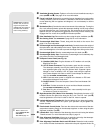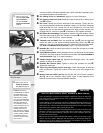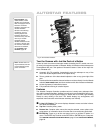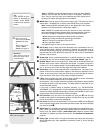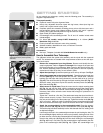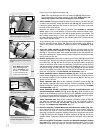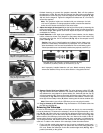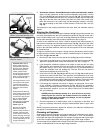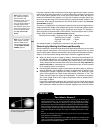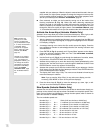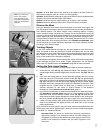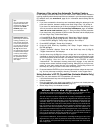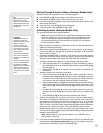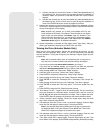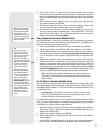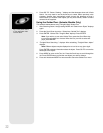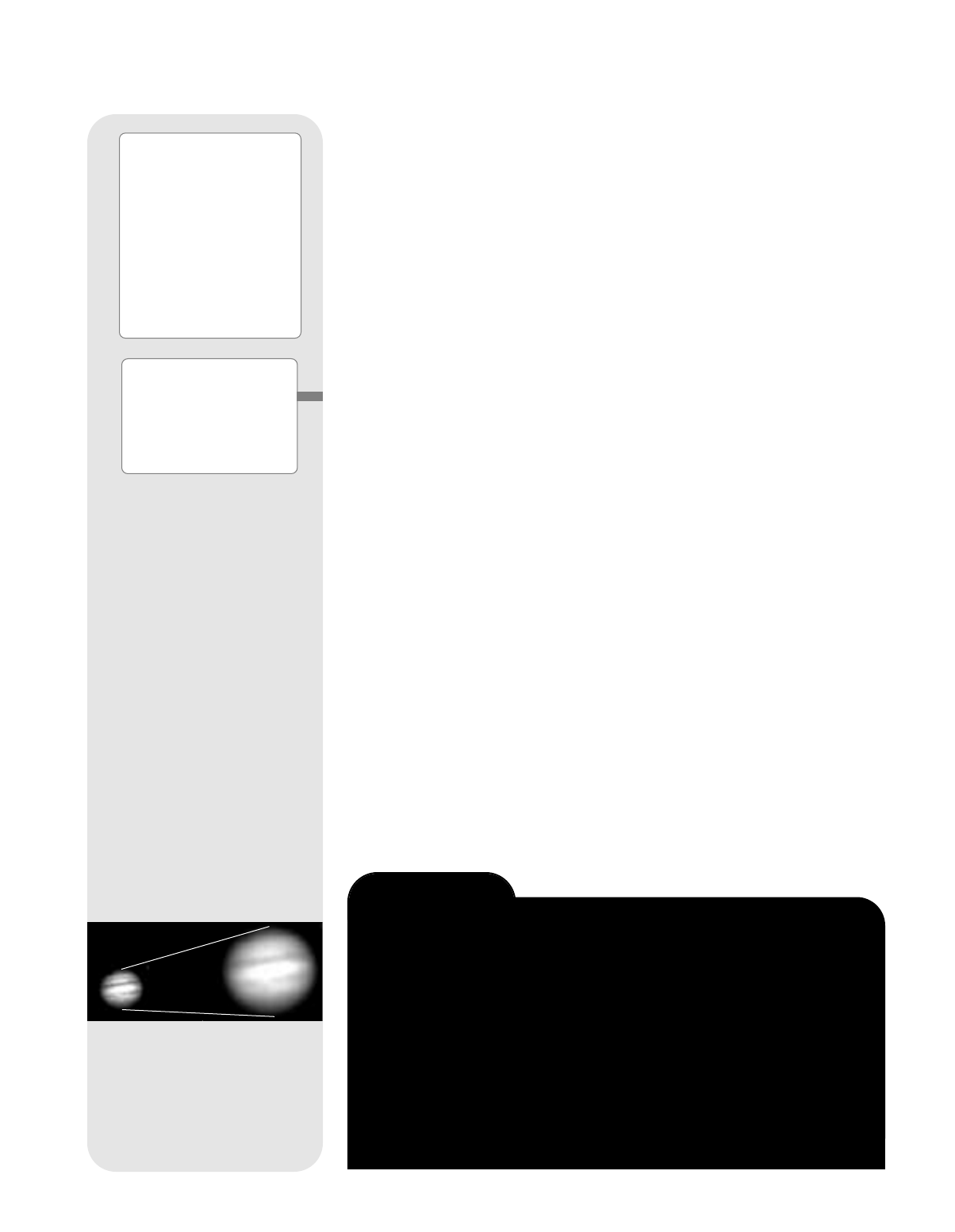
15
Low power eyepieces offer a wide field of view, bright, high-contrast images, and eye
relief during long observing sessions. To find an object with a telescope, always start
with a lower power eyepiece such as the Super Plössl 26mm. When the object is
located and centered in the eyepiece, you may wish to switch to a higher power eye-
piece to enlarge the image as much as practical for prevailing seeing conditions. For
information about optional eyepieces for the LXD75-Series models, see
OPTIONAL
ACCESSORIES, page 37.
The power, or magnification of a telescope is determined by the focal length of the tel-
escope and the focal length of the eyepiece being used. To calculate eyepiece power,
divide the telescope's focal length by the eyepiece's focal length. For example, a
26mm eyepiece is supplied with the LXD75-Series. The focal length of the 8" LXD75-
Series model is 812mm (see
SPECIFICATIONS, page 46).
Telescope Focal Length ÷ Eyepiece Focal Length = Magnification (Power)
Telescope Focal Length = 812mm
Eyepiece Focal Length = 26mm
812 ÷ 26 = 31
The eyepiece power, or magnification is therefore 31X (approximately).
Observing by Moving the Telescope Manually
After the telescope is assembled and balanced as described previously, you are ready
to begin manual observations. View easy-to-find terrestrial objects such as street
signs or traffic lights to become accustomed to the functions and operations of the tel-
escope. For the best results during observations, follow the suggestions below:
■ When you wish to locate an object to observe, first loosen the telescope’s R.A.
lock (
33, Fig. 1d) and Dec. lock (17, Fig. 1d). The telescope can now turn freely
on its axes. Unlock each axis separately and practice moving your telescope.
Then practice with two unlocked axes at the same time.
It is very important to
practice this step to understand how your telescope moves, as the movement
of an equatorial mount is not intuitive.
■ Use the aligned viewfinder to sight-in on the object you wish to observe. When the
object is centered in the viewfinder’s crosshairs, re-tighten the R.A. and Dec. locks.
■ A telescope’s eyepiece magnifies the image formed by the telescope’s main
optics. Each eyepiece has a focal length, expressed in millimeters, or “mm.” The
smaller the focal length, the higher the magnification.
For example, an eyepiece
with a focal length of 9mm has a higher magnification than an eyepiece with a
focal length of 26mm.
Low-power magnification eyepieces offer a wide field of view, bright, high-contrast
images, and relief of eye strain during long observing sessions. To observe an object
with a telescope, always start with a low power eyepiece such as the SP 26mm
Note: For a list of magnifi-
cation ratings of the eye-
pieces available for the
LXD75-Series telescopes,
see
OPTIONAL ACCES-
SORIES
, page 37.
Note: Seeing conditions
vary widely from night-to-
night and site-to-site.
Turbulence in the air, even
on an apparently clear
night, can distort images. If
an image appears fuzzy
and ill-defined, back off to a
lower power eyepiece for a
more well-resolved image
(see
Fig. 15a and 15b
below).
Too Much Power?
Can you ever have too much power? If the type of power you’re referring to is
eyepiece magnification, yes, you can! The most common mistake of the begin-
ning observer is to “overpower” a telescope by using high magnifications which
the telescope’s aperture and atmospheric conditions cannot reasonably support.
Keep in mind that a smaller, but bright and well-resolved image is far superior to
one that is larger, but dim and poorly resolved (see Figs. 15a and 15b). Powers
above 400X should be employed only under the steadiest atmospheric condi-
tions.
Autostar can calculate the best eyepiece for you to use. Try out the “Eyepiece
Calc” feature in the Utilities menu.
Most observers should have three or four additional eyepieces to achieve the full
range of reasonable magnifications possible with the LXD75-Series telescopes.
See OPTIONAL ACCESSORIES, page 37.
LXD75 TIPS
Fig. 15a & 15b: Jupiter; examples of
the right amount of magnification and
too much magnification.



